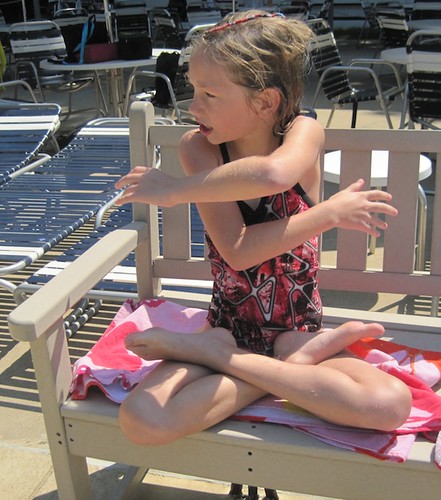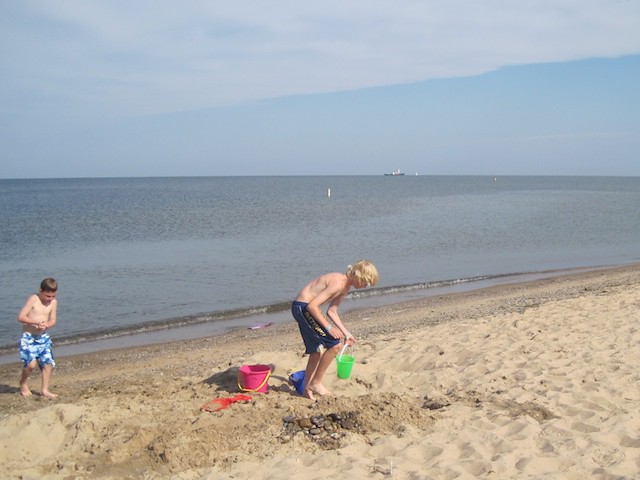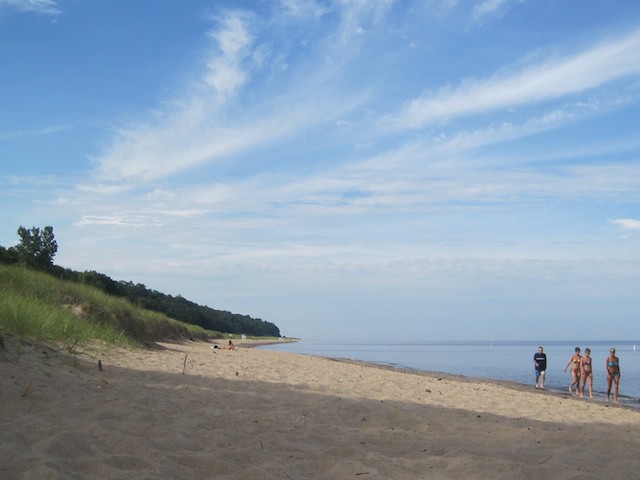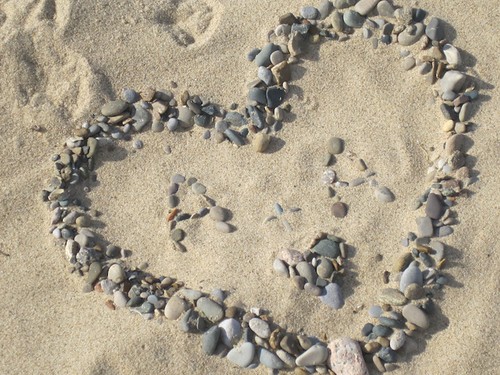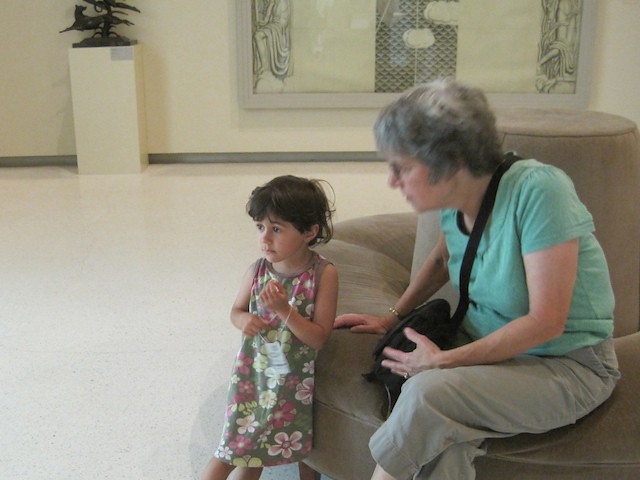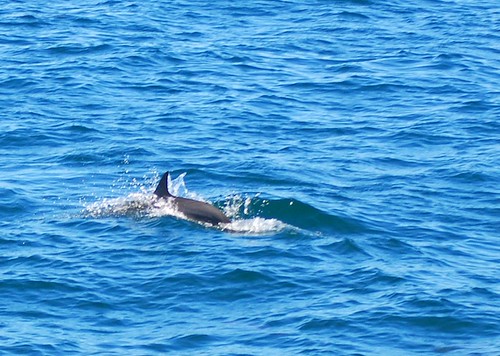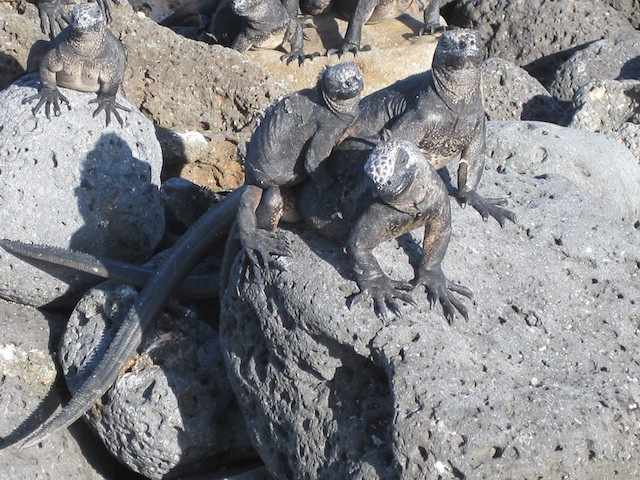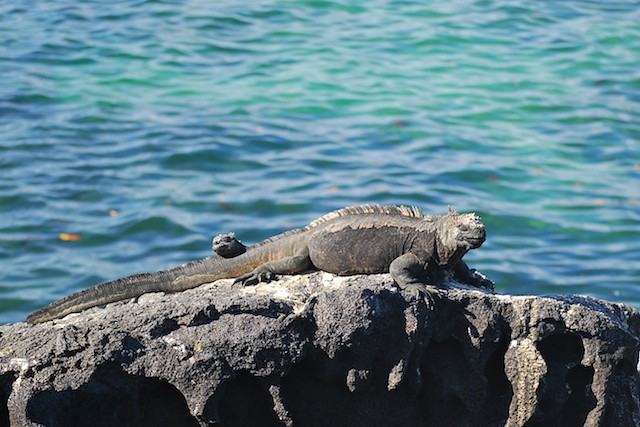
As we toured in the Galapagos, we often thought about whales. One day, we watched a small pod of whales as they were spouting and flipping their tails some distance from the ship. Another day we saw these bones.
After I came back, I decided for several reasons that I would read
Moby Dick. One reason was that Melville, on one of his voyages, had been in the Galapagos. Another reason was that simply being in the Galapagos makes one think about what the world might have been like before human alteration of the environment -- seeing mile-long sand beaches inhabited only by sea lions, as I've said, is thought-provoking. (This despite the fact that the Galapagos have been altered substantially, and great effort is going into reversing the damage.)

The ocean used to be infinite -- but the oil spill in the Gulf of Mexico brings home how vulnerable the vast seas now have become.
Moby Dick is about the vastness of the sea -- yet another impetus that led me to read it.
I don't read
Moby Dick as a simple ecological allegory (like Dr.Seuss's
The Lorax). I enjoyed the opposition between the physical demands of whaling and the obsession of Ahab. I enjoyed the encyclopedic depiction of whales as whales, as illustrated in my yellowing Modern Library edition by Rockwell Kent. I think it flattens the complex novel to see it as making a political point.
Today's
New York Times includes
an article that explores what connections can be made between
Moby Dick and the Gulf oil spill. The article states: "The novel has served over the years as a remarkably resilient metaphor for everything from atomic power to the invasion of Iraq to the decline of the white race ... . Now, 50 miles off the Louisiana coast, its themes of hubris, destructiveness and relentless pursuit are as telling as ever."
Randy Kennedy, author of the article, suggests how sometimes the connections are anachronistic or exaggerated. However, he elaborates quite a few of them. BP, suggests Kennedy, plays the role of Ahab. He notes an "analogy between the relentless hunt for whale oil in Melville’s day and for petroleum in ours." He also cites many past authors who have tried to use Melville's work to advance what they have to say about various environmental issues. It's an interesting article, but I think the application of
Moby Dick diminishes Melville's accomplishment.
 Today's Washington Post has an article titled "In Europe, science collides with the bottom line," with the front-page summary as shown at right.
Today's Washington Post has an article titled "In Europe, science collides with the bottom line," with the front-page summary as shown at right.





